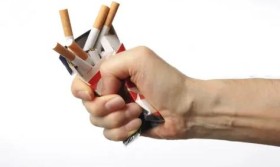The Hidden Hurdle: How Tobacco Use Undermines Electrical Cardioversion in Pulmonary Heart Disease Patients
For many individuals living with the dual challenges of pulmonary heart disease (PHR) and a complicating cardiac arrhythmia, electrical cardioversion represents a beacon of hope. This medical procedure, which uses a controlled electric shock to restore a normal heart rhythm, is often seen as a straightforward path back to stability. However, a critical and often overlooked factor can dramatically alter this outcome: tobacco use. The relationship between smoking and heart disease is well-known, but the specific mechanism by which tobacco sabotages the efficacy of electrical cardioversion for arrhythmias in the context of pulmonary heart disease is a nuanced and crucial story that every patient and clinician must understand.
To appreciate this fully, we must first delve into the unique physiology of pulmonary heart disease, also known as cor pulmonale. This condition is not a primary disease of the heart muscle itself. Instead, it is a consequence of lung ailments—most commonly chronic obstructive pulmonary disease (COPD) and pulmonary fibrosis, which are overwhelmingly linked to long-term tobacco smoking. In PHR, the lungs' damaged blood vessels create high resistance, forcing the right side of the heart to work excessively hard to pump blood through the pulmonary circuit. Over time, this relentless pressure causes the right ventricle to enlarge, thicken, and eventually weaken. This strained and remodeled heart muscle becomes a fertile ground for arrhythmias, particularly atrial fibrillation and atrial flutter. The heart, already struggling with its mechanical pump function, now loses its electrical coordination.
Enter electrical cardioversion. The goal is simple: to reset the heart's electrical activity, allowing the natural pacemaker, the sinoatrial node, to regain control. For a patient with PHR, achieving this normal rhythm, or sinus rhythm, is profoundly beneficial. It improves the efficiency of the heart's filling and pumping, reduces the risk of stroke, and alleviates debilitating symptoms like shortness of breath and fatigue. The success of the procedure, however, is not guaranteed at the moment of the shock; it is determined by the heart's ability to maintain that normal rhythm in the hours, days, and weeks that follow. This is where tobacco's insidious role becomes paramount.
Tobacco smoke is a toxic cocktail of thousands of chemicals, with nicotine and carbon monoxide being the primary villains in our story. Their impact creates a "perfect storm" of physiological challenges that directly undermine the cardioversion process.
First, nicotine is a potent stimulant. It increases the heart rate, raises blood pressure, and, most critically, heightens the electrical excitability of the heart muscle cells. Following a successful cardioversion, the heart is in a vulnerable, stabilized state. The introduction of nicotine creates an electrical environment that is irritable and unstable, significantly increasing the likelihood that the chaotic electrical signals of an arrhythmia will be triggered once again. It's like trying to calm a room after a disruption, only to have someone repeatedly shout and cause new disturbances. This pro-arrhythmic effect of nicotine is a direct catalyst for the recurrence of atrial fibrillation or other irregular heartbeats post-cardioversion.
Second, carbon monoxide (CO) plays a devastating role. This gas, inhaled from tobacco smoke, has a far greater affinity for hemoglobin in red blood cells than oxygen does. It binds to hemoglobin, forming carboxyhemoglobin, which effectively displaces life-sustaining oxygen. The result is a state of chronic hypoxia—a lack of adequate oxygen supply to tissues. For a patient with PHR, the heart is already oxygen-starved due to the strained right ventricle. Adding systemic hypoxia from carbon monoxide exposure pushes the heart muscle further into distress. Oxygen-deprived heart cells are metabolically compromised and electrically unstable. They are more prone to abnormal automaticity and conduction, creating the perfect substrate for arrhythmias to re-emerge. A successful cardioversion shock cannot fix this underlying metabolic deficit; it merely resets a system that is still fundamentally broken due to a lack of oxygen.
Furthermore, the chronic inflammatory state induced by long-term tobacco use cannot be overstated. Smoking constantly bathes the body in inflammatory cytokines, which contribute to the progression of both the underlying lung disease and the subsequent pulmonary hypertension that drives PHR. This inflammation also affects the heart itself, promoting fibrosis (scarring) and electrical remodeling within the atria. This scarred tissue acts as a physical barrier, disrupting the smooth flow of electrical impulses and creating micro re-entry circuits—the very engines that drive arrhythmias like atrial fibrillation. Therefore, even after cardioversion, the structural and electrical landscape of the heart remains primed for the arrhythmia to restart.
The clinical evidence supporting this is compelling. Studies have consistently shown that active smokers, particularly those with pre-existing cardiopulmonary conditions, have significantly lower rates of successful long-term rhythm maintenance after electrical cardioversion compared to non-smokers. The immediate "success" of the shock—the conversion to sinus rhythm on the monitor—may be similar. However, the relapse rate is starkly higher in the smoking population. This translates to a frustrating cycle for patients: undergoing a procedure, experiencing brief relief, and then slipping back into the uncomfortable and dangerous state of arrhythmia, all while their underlying pulmonary heart disease continues to worsen.
So, what is the solution? The answer lies in a comprehensive pre- and post-cardioversion strategy where tobacco cessation is not a mere suggestion, but the cornerstone of treatment. For a patient with PHR facing an arrhythmia, quitting smoking is as critical as the cardioversion procedure itself. It is the most powerful intervention to improve the long-term success of restoring a normal heart rhythm.
The benefits of cessation begin almost immediately. Within hours, carbon monoxide levels drop, allowing oxygen delivery to the heart and other tissues to improve. Within weeks, the inflammatory burden decreases, and the heightened sympathetic tone from nicotine subsides. Over months, the slow process of healing can begin, potentially reducing some of the electrical and structural remodeling that perpetuates arrhythmias. For a patient preparing for electrical cardioversion, a period of sustained smoking cessation prior to the procedure can dramatically improve the myocardial environment, making it more receptive to maintaining a normal rhythm. This proactive approach to managing pulmonary heart disease and arrhythmia is far more effective than reacting to failures after they occur.

In conclusion, the journey to a stable heart rhythm for a patient with tobacco-induced pulmonary heart disease is a challenging one. Electrical cardioversion is a valuable tool, but it is not a magic wand. Its efficacy is profoundly modulated by lifestyle factors, with tobacco use being the most significant modifiable risk factor. The toxic effects of nicotine and carbon monoxide create an electrically unstable, hypoxic, and inflamed heart that is fundamentally resistant to maintaining the normal rhythm that cardioversion aims to achieve. Therefore, the conversation between doctor and patient must evolve. It should not only be about scheduling a procedure but about forging a partnership to achieve complete tobacco cessation. By confronting the impact of smoking on cardioversion outcomes head-on, we can break the cycle of failure and offer those with pulmonary heart disease and cardiac arrhythmia a genuine and lasting chance at a better quality of life and improved cardiovascular health. The path to a steady heartbeat is paved with the decision to extinguish the last cigarette.













